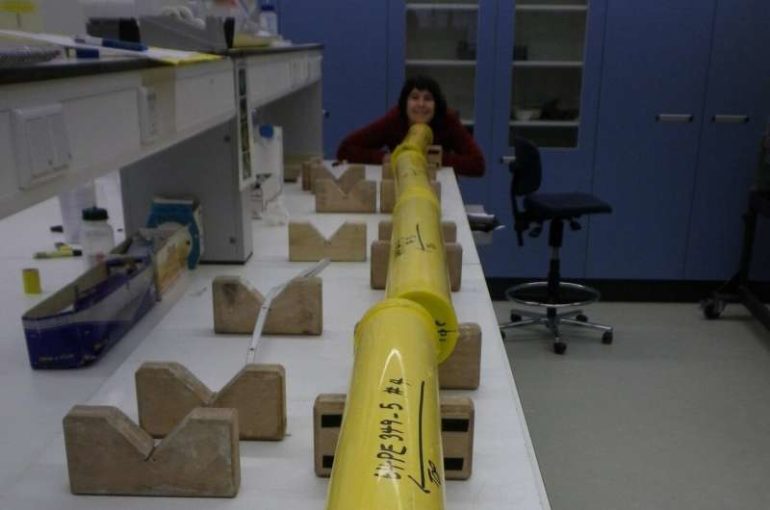Large parts of the Sahara Desert were green thousands of years ago, evidenced by prehistoric engravings in the desert of giraffes, crocodiles and a stone-age cave painting of humans swimming. Recently, more detailed insights were gained from a combination of sediment cores extracted from the Mediterranean Sea and results from climate computer modeling, which an international research team, including University of Hawai’i at Mānoa oceanography researcher Tobias Friedrich, examined for the first time.
The layers of the seafloor tell the story of major environmental changes in North Africa over the past 160,000 years. The study, co-authored by Friedrich and led by Cécile Blanchet of the German Research Centre for Geosciences GFZ, was published in Nature Geoscience.
Climatic context for past populations
Together with the GEOMAR Helmholtz Centre for Ocean Research Kiel, a team of scientists organized a research cruise to the Libyan Gulf of Sirte.
“We suspected that when the Sahara Desert was green, the rivers that are presently dry would have been active and would have brought particles into the Gulf of Sirte,” said Blanchet.
Analyzing such sediments would help to better understand the timing and circumstances for the reactivation of these rivers and provide a climatic context for the development of past human populations.
Using a method called piston coring, the scientists pressed giant cylinders into the seafloor and were able to recover nearly 30-foot long columns of marine mud.
The layers of mud contain sediment particles and plant remains transported from the nearby African continent, as well as shells of microorganisms that grew in seawater, telling the story of climatic changes in the past.
“By combining the sediment analyses with results from our computer simulation, we can now precisely understand the climatic processes at work to explain the drastic changes in North African environments over the past 160,000 years,” said Friedrich.
Climate change can prompt migrations
From previous work, it was already known that several rivers episodically flowed across the region, which today is one of the driest areas on Earth. The team’s unprecedented reconstruction continuously covers the last 160,000 years. It offers a comprehensive picture of when and why there was sufficient rainfall in the Central Sahara to reactivate these rivers.
“We found that it is the slight changes in the Earth’s orbit and the waxing and waning of polar ice sheets that paced the alternation of humid phases with high precipitation and long periods of almost complete aridity,” explained Blanchet.
The fertile periods generally lasted five thousand years and humidity spread over North Africa up to the Mediterranean coast. For the people of that time, this resulted in drastic changes in living conditions, which probably led to large migratory movements in North Africa.
“With our work, we have added some essential jigsaw pieces to the picture of past Saharan landscape changes that help to better understand human evolution and migration history,” said Blanchet. “The combination of sediment data with computer-simulation results was crucial to understand what controlled the succession of humid and arid phases in North Africa during the past. This is particularly important because it is expected that this region will experience intense droughts as a consequence of human-induced climate change.”
Study shows the Sahara swung between lush and desert conditions every 20,000 years, in sync with monsoon activity
More information:
Cécile L. Blanchet et al. Drivers of river reactivation in North Africa during the last glacial cycle, Nature Geoscience (2021). DOI: 10.1038/s41561-020-00671-3
Provided by
University of Hawaii at Manoa
Citation:
Ancient rivers reveal multiple Sahara Desert greenings (2021, January 29)
retrieved 1 February 2021
from https://phys.org/news/2021-01-ancient-rivers-reveal-multiple-sahara.html
This document is subject to copyright. Apart from any fair dealing for the purpose of private study or research, no
part may be reproduced without the written permission. The content is provided for information purposes only.



